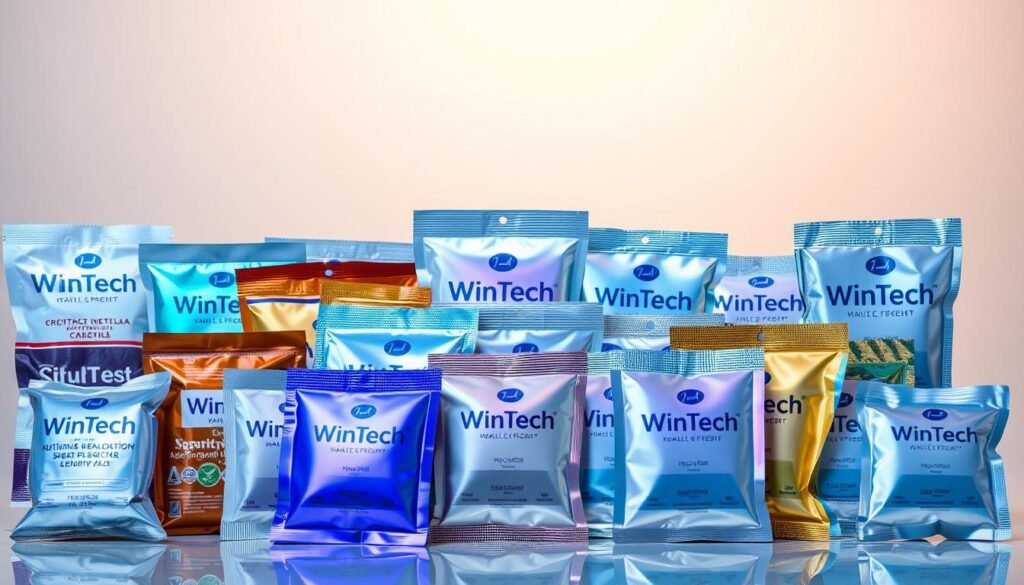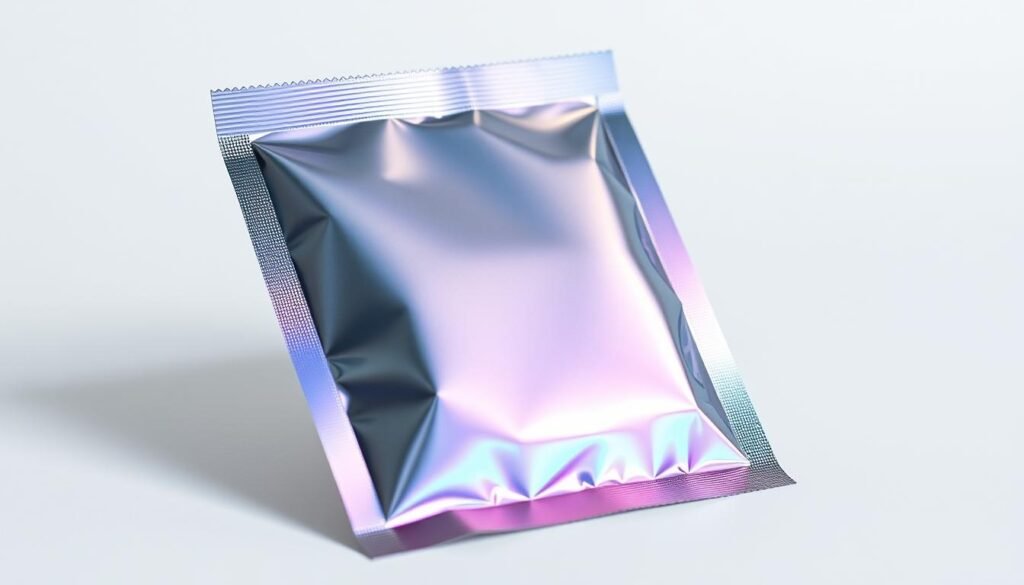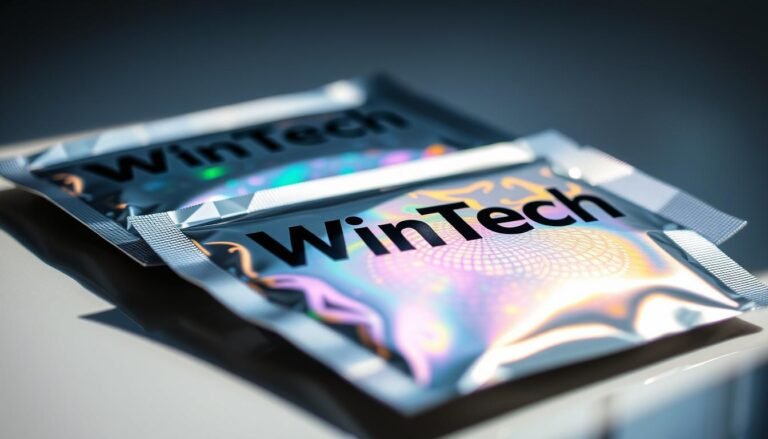Are you aware of the silent battle raging against product counterfeiting in today’s global marketplace? What are sachets, and how can they become your first line of defense against fake products?
Sachets represent more than just single-use packaging solutions. These compact containers have revolutionized how businesses protect their products from counterfeiters. What are sachets specifically designed to do? They serve as critical protective barriers that authenticate product origins and prevent unauthorized replication.
Wintech Package understands that in the United States, protecting consumer trust is paramount. What are Sachets vs packets might seem like a minor distinction, but the advanced security features embedded in modern sachets make them powerful tools against fraudulent manufacturing.
The World Health Organization reports that over 80% of counterfeit cases begin with visible packaging anomalies. By implementing holographic security foils, manufacturers can create tamper-evident packaging that immediately signals authenticity to consumers and regulatory bodies.
Key Takeaways of What are Sachets
- Sachets provide critical anti-counterfeiting protection
- Holographic security foils offer advanced authentication methods
- Single-use sachets enhance product safety and consumer confidence
- Packaging technology is evolving to combat counterfeiting
- Consumer protection starts with innovative packaging solutions
Understanding What are Sachets: Definition, Types, and Uses
Sachets have revolutionized packaging across multiple industries, offering compact and convenient solutions for various products. When you explore what are sachets, you’ll discover versatile containers designed to package small quantities of substances with precision and efficiency.

Sachets in skincare have become increasingly popular, providing consumers with single-use, travel-friendly product samples. These lightweight packages allow you to experience premium skincare formulations without committing to full-sized products.
What are Sachets Made Of?
Modern sachets typically utilize pharmaceutical-grade materials that protect contents from external contamination. Key materials include:
- Aluminum foils with advanced barrier properties
- Biodegradable sachets made from plant-based polymers
- Multi-layer laminated packaging materials
Common Uses for Sachets in Various Industries
Different sectors leverage sachets for unique packaging needs. Sachets for travel have transformed how consumers interact with personal care, pharmaceutical, and food products.
| Industry | Sachet Application | Key Benefits |
|---|---|---|
| Skincare | Single-use masks | Convenience and hygiene |
| Pharmaceuticals | Medication portions | Precise dosage control |
| Food | Condiment packets | Portability and freshness |
The Role of Sachets in Packaging Solutions
Packaging innovations have transformed sachets into sophisticated delivery systems. Biodegradable sachets represent a significant advancement, addressing environmental concerns while maintaining product integrity and consumer convenience.
What are Sachets in Anti-Counterfeiting Efforts?
Protecting product integrity has become a critical challenge for businesses across various industries. Sachets packaging now plays a crucial role in combating counterfeiting through advanced security technologies.

Modern packaging solutions have revolutionized how companies safeguard their products from unauthorized replication. Food sachets and other packaging formats now incorporate sophisticated anti-counterfeiting measures that provide multiple layers of protection.
How Holographic Security Foils Work
Holographic security foils represent a cutting-edge technology in sachets benefits protection. These advanced materials create complex optical features that are extremely difficult to reproduce:
- Multidimensional visual patterns
- Intricate micro-text elements
- Dynamic light-reflection capabilities
- Unique authentication signatures
Benefits of Using Holographic Foils in Sachets
The implementation of holographic technologies offers manufacturers significant advantages in protecting their brand and consumers:
- Enhanced visual authentication
- Immediate product verification
- Tamper-evident packaging
- Reduced counterfeiting risks
Case Studies: Effective Use of Security Foils in Sachets
Real-world applications demonstrate the powerful impact of holographic security measures. Pharmaceutical and food industries have successfully integrated these technologies to protect their products from fraudulent reproduction.
Holographic security foils represent a critical innovation in protecting product authenticity and consumer safety.
By leveraging advanced sachets packaging techniques, businesses can effectively combat counterfeiting while maintaining product integrity and consumer trust.
The Future of Sachets: What are Sachets Evolving Into?
As technology advances, what are sachets becoming increasingly sophisticated? The packaging industry is witnessing remarkable transformations in sachet design and functionality. Emerging technologies are reshaping how medicine sachets deliver value and protection for consumers across various sectors.
Wintech Package is at the forefront of sachet innovation, developing cutting-edge solutions that address modern market challenges. Smart packaging technologies now integrate advanced sensors and authentication features, elevating the sachets benefits beyond traditional packaging methods. These developments help combat counterfeiting while providing enhanced product security for businesses and end-users.
Emerging Technologies for Improved Sachets
Digital authentication systems are revolutionizing what are sachets in the modern marketplace. Embedded microchips and AI-powered verification tools enable real-time tracking and validation of product authenticity. Medicine sachets now incorporate sophisticated security layers that protect against unauthorized reproduction and ensure consumer safety.
Sustainability in Sachet Production
Environmental consciousness drives significant changes in sachet manufacturing. Biodegradable materials and recyclable packaging solutions are becoming standard in the industry. You’ll find innovative approaches that reduce plastic waste while maintaining the high-performance standards required for effective product protection.
The Impact of E-Commerce on Sachet Demand
E-commerce platforms are transforming how sachets are designed and distributed. Compact, secure packaging solutions are crucial for safe shipping and product integrity. The rising digital marketplace demands sachets that can withstand transportation challenges while providing clear product information and robust anti-counterfeiting measures.

